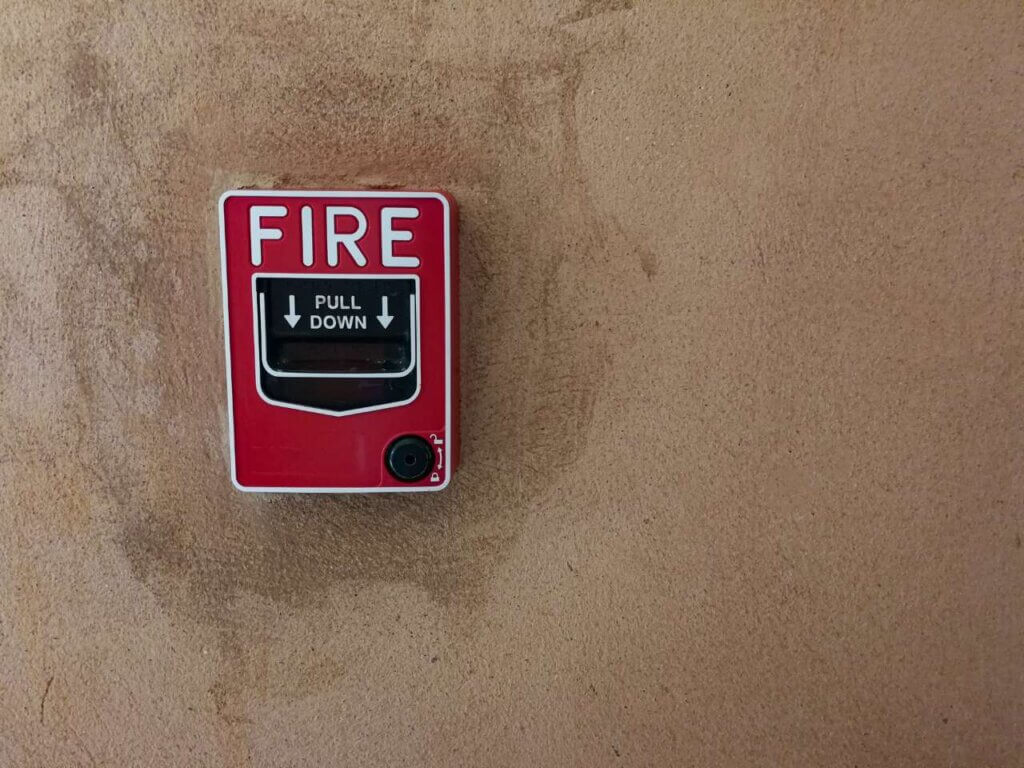5 Composite Decking Lighting Ideas
Our composite decking looks great in any setting, but you can really make your outdoor spaces shine with our decking
Products in Stock
Lowest Prices
Express Delivery
10-Year Warranty
Early April Sale. Up To 15% Off.

Planning your dream deck but worried about safety? It’s a fair point – with BBQs, fire pits and even outdoor heaters becoming standard garden features, many homeowners are questioning how their decking would fare in a fire. It’s a fair concern – especially when investing in something meant to last decades. Nobody wants to create an accidental fire hazard when they’re trying to build their perfect outdoor space.
No decking material is completely fireproof – that’s the first thing to understand. Fire resistance actually refers to how a material behaves when exposed to flames: how quickly it ignites, how fast fire spreads across it, and whether it helps or hinders the blaze. These differences can be significant when you’re relaxing with a glass of wine next to your chiminea on a chilly autumn evening.
Some materials might burn quickly but produce little heat, while others might take ages to catch fire but then burn intensely. Understanding these characteristics helps you make smarter choices for your specific situation and how you plan to use your outdoor space.
Fire takes hold on decking in three main ways: direct contact with flames, heat radiation, or airborne embers landing on the surface. Traditional wooden decking – being essentially kiln-dried lumber – can catch alight relatively easily under the right conditions. The grain structure of timber actually helps fire travel along the boards, creating channels for flames to follow.
The gaps between deck boards can also affect fire behaviour. Tightly fitted boards might slow spread in some cases, but they can also trap heat and accelerate burning once ignition occurs. Before making your final decision, you might want to choose the right decking for your garden by weighing up all safety aspects alongside appearance and maintenance.
The UK uses the Euroclass system to classify building materials according to fire resistance, ranging from A (won’t burn) to F (highly flammable). Most decent composite decking products achieve B to D classifications. While residential gardens don’t usually face strict regulations, it’s worth checking local building codes – especially for raised decks, roof terraces or commercial projects where specific ratings might be required.
These ratings aren’t just bureaucratic red tape – they’re based on rigorous testing that measures ignition time, flame spread rate, heat release, and smoke production. For decking that’s attached to buildings or in multi-occupancy settings, these factors become particularly important for everyone’s safety.
In short – yes, composite decking typically offers better fire resistance than timber, but it’s not invincible. Here’s why:
Composite boards blend wood fibres with recycled plastics and various additives. This hybrid structure creates material that’s tougher to ignite than pure timber. Many manufacturers also mix fire-retardant chemicals into their formulations. So next time you’re browsing composite decking boards, take a closer look at what they’re made from – compositions vary significantly between brands.
The plastic component (usually high-density polyethylene or polypropylene) melts rather than immediately combusting, while the wood fibres are thoroughly encapsulated, limiting their exposure to oxygen. Some premium products even incorporate mineral fillers that act as natural fire inhibitors. The manufacturing process itself – where materials are compressed under extreme heat – also alters how the final product responds to fire.
When flames hit quality composite decking, something interesting happens. Rather than catching fire immediately, it tends to melt first. This melting actually slows flame spread compared to timber. Better still, composites don’t usually produce those dangerous flying embers that can spread fire to other parts of your garden or home.
The trade-off? Once composite does ignite, its plastic content means it burns quite hot. That said, premium composites are often engineered to self-extinguish once you remove the flame source – a significant safety advantage over wood.
Another consideration is smoke production. Some composite products might produce more smoke than timber when burning, though advanced formulations work to minimise this. If your deck is near doors and windows, or on a balcony with limited escape routes, this factor deserves attention during your selection process.

Even with composite’s inherent advantages, a few simple precautions will make your deck even safer.
Start with regular cleaning. Fallen leaves, twigs and built-up grease are essentially kindling waiting for a spark. A thorough sweep and occasional power wash aren’t just about keeping your deck looking smart – they’re genuine safety measures. If you’re planning to put a BBQ or fire pit on your deck, get a proper fire-resistant mat to place underneath – these cost far less than replacing damaged boards.
Setting up safety zones makes sense too. Keep any open flames at least 3 metres away from buildings, fences or overhanging plants. And those post-dinner cigarettes? Never stub them out directly on the decking – use a proper ashtray instead. It’s also worth considering how you position outdoor furniture – keeping cushions and fabrics away from cooking areas reduces risk substantially.
Thinking about wiring for outdoor lighting or speakers? Make sure it’s properly rated for outdoor use and installed by a qualified electrician. Faulty wiring causes countless deck fires each year, yet it’s completely avoidable with proper installation and maintenance.
A few targeted accessories can boost your deck’s fire resistance substantially. Fire-resistant deck tiles can be installed in high-risk areas like your cooking zone. Keep a suitable outdoor fire extinguisher handy – you’ll never regret having one if you need it.
Some specialised fire-resistant coatings exist for composite decking, though check with your manufacturer before applying anything. The wrong products might damage your boards or invalidate warranties – definitely not worth the risk.
For those really committed to safety, consider installing heat sensors or flame detectors that connect to your home security system. These aren’t common in residential settings yet, but they’re becoming more affordable and could provide early warning of problems, especially for decks that aren’t always visible from inside the house.
Composite decking wins the fire-safety contest against traditional timber hands down. Its construction helps prevent quick ignition and slows flame spread, potentially giving precious extra minutes in an emergency.
That said, no deck is completely fireproof. Taking sensible precautions remains essential. By understanding how composite decking handles fire and adding a few safety measures, you can relax knowing you’ve made your outdoor space significantly safer.
When picking materials, weigh fire resistance alongside looks, maintenance needs and durability. Today’s composite options tick all these boxes remarkably well, offering genuine peace of mind without sacrificing style.
Remember that fire ratings vary between brands and ranges. Always check the specific rating of products you’re considering, and follow installation guidelines to the letter for best performance.

Our sample pack contains a sample piece of each colour currently available. Order your free sample pack today to compare the colours and get a true feeling of the Dino Decking range!
Our composite decking looks great in any setting, but you can really make your outdoor spaces shine with our decking
If the idea of having rats under your decking makes you shiver, don’t worry. We’ll let you know the signs
Business hours
Monday: 09:00 – 17:30
Tuesday: 09:00 – 17:30
Wednesday: 09:00 – 17:30
Thursday: 09:00 – 17:30
Friday: 09:00 – 17:30
Saturday: Closed
Sunday: Closed
Contact us
01942 355968
support@dino.co.uk
Collection Address: Unit 1 Wetheral Close Hindley Ind Estate Wigan Greater Manchester North West WN2 4HS
Pages
Products
Testing
Copyright 2025 Dino Decking Ltd All Rights Reserved.
VAT Number: GB296097848.
Company Number: 10837233.